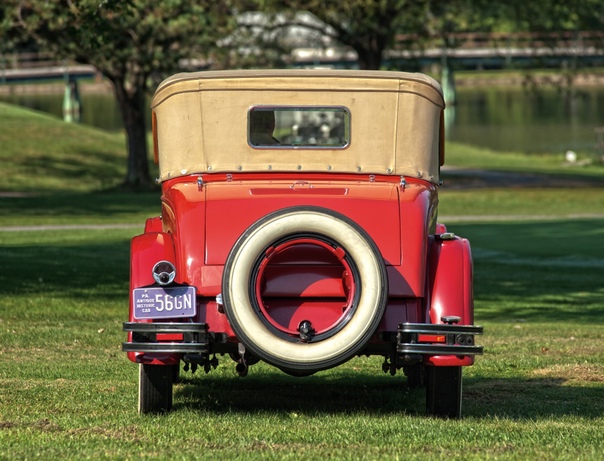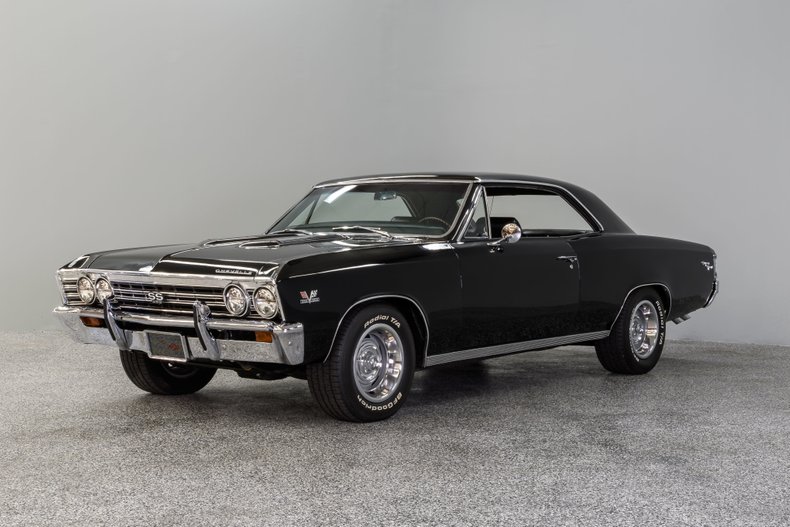The Studebaker Commander, an automobile that spanned four decades from 1927 to 1966, holds a special place in the annals of American automotive history. As a product of the Studebaker Corporation, a company with a rich heritage dating back to the early 19th century, the Commander represented innovation, resilience, and the ability to adapt to the ever-changing landscape of the automotive industry. This article delves into the remarkable journey of the Studebaker Commander, tracing its evolution, significant milestones, and the enduring impact it had on the American automotive landscape.

The Birth of the Commander

The story of the Studebaker Commander began in 1927 when Studebaker introduced it as a new model within their lineup. It was positioned as a mid-range offering, slotting between the lower-priced Studebaker Dictator and the more upscale Studebaker President. The Commander was notable for its innovative design, incorporating elements that were ahead of their time.
Streamlined Aesthetics: The Commander featured a sleek and streamlined design that was notably modern for its era. Its low-slung profile, sculpted fenders, and attention to aerodynamics were remarkable advancements in the late 1920s.

Engineering Excellence: Under the hood, the Commander was powered by robust engines, often featuring advanced engineering. The Commander's commitment to performance and reliability set it apart from its competitors.
Versatility: Studebaker offered a wide range of body styles for the Commander, including sedans, coupes, convertibles, and even station wagons. This versatility appealed to a broad spectrum of consumers.
The Great Depression and Resilience

The Great Depression of the 1930s was a trying period for the automotive industry. Many manufacturers folded under the economic pressures of the era. However, Studebaker displayed remarkable resilience during this tumultuous time, and the Commander played a crucial role in the company's survival.

Innovation: Studebaker continued to innovate with the Commander throughout the 1930s. It introduced the first all-steel body in 1933, a significant advancement in safety and durability.

Affordable Luxury: Studebaker marketed the Commander as a car that offered "luxury at a price you can afford." This strategy helped the company weather the economic storm and maintain its presence in the market.
World War II and the Commander

The outbreak of World War II in the early 1940s shifted the focus of American automakers to military production. Studebaker was no exception, and the Commander's production was temporarily halted as the company dedicated its resources to the war effort.

Military Contribution: Studebaker played a vital role in supplying vehicles and equipment for the Allied forces. The company's experience in manufacturing vehicles, including trucks and amphibious craft, during the war proved invaluable.
Post-War Resurgence

After the war, Studebaker, like other American automakers, faced the challenge of transitioning back to civilian production. The Commander played a pivotal role in Studebaker's post-war resurgence.
Advanced Design: The Commander received a facelift in 1947, featuring a more modern design with a distinctive bullet-nose front end, making it one of the most recognizable cars of its era.

V8 Engine Innovation: In 1951, Studebaker introduced the first V8 engine available in a post-war American car. This was a significant milestone in automotive engineering, and the Commander became known for its powerful and efficient V8 engines.
Sporting Success: Studebaker also found success in motorsports with the Commander. The car became a favorite in stock car racing, earning victories and solidifying its reputation for performance.

1953: The Starliner and Starlight

The 1953 Studebaker Commander introduced two iconic body styles that made a lasting impact on American automotive design: the Starliner and the Starlight. The Starliner was a hardtop coupe with a sweeping roofline that was both stylish and aerodynamic. The Starlight, a two-door coupe, featured a unique wraparound rear window that provided excellent visibility and became a signature design element.

These innovations set the Commander apart and showcased Studebaker's commitment to pushing the boundaries of design and engineering.
End of an Era: The 1960s

The 1960s marked a challenging period for Studebaker and the Commander. The American automotive landscape was becoming increasingly competitive, and Studebaker faced financial difficulties. In 1961, the company ceased production at its South Bend, Indiana plant, signaling a major shift in operations.

However, the Commander continued to be produced at the company's Canadian facility in Hamilton, Ontario. During this time, the Commander evolved in response to changing consumer preferences and safety regulations.

Redesign: The 1963 Commander underwent a significant redesign, adopting a more squared-off, conservative appearance that reflected the design trends of the era.

The End of an Era: Despite efforts to modernize the Commander, Studebaker's financial challenges and declining sales led to the decision to discontinue the model and exit the automobile manufacturing business in 1966.
Legacy and Collectibility

While the Studebaker Commander ceased production nearly six decades ago, its legacy lives on among automotive enthusiasts and collectors. The Commander is highly sought after for several reasons:
Iconic Design: The Commander's unique and innovative design elements, such as the bullet-nose front end and wraparound rear window, contribute to its enduring appeal.

Historical Significance: The Commander's role in automotive history, from its pioneering all-steel body to the introduction of the first post-war V8 engine, makes it a historically significant vehicle.
Limited Production: As a result of its discontinuation, the Commander is relatively rare today, enhancing its collectibility.

Racing Pedigree: The Commander's success in motorsports adds to its desirability among racing enthusiasts.
Restoration and Preservation

Many dedicated collectors and enthusiasts undertake the restoration and preservation of Studebaker Commanders. This commitment ensures that these iconic vehicles continue to be enjoyed by future generations.
The Future of Studebaker Commander

While the Studebaker Commander ceased production in 1966, its enduring legacy remains a testament to American automotive ingenuity, innovation, and resilience. The Commander's impact on design, engineering, and motorsports is still celebrated by enthusiasts today.
As these iconic cars find new homes in the hands of collectors and aficionados, the Studebaker Commander continues to evoke the spirit of an era when American automakers were at the forefront of innovation and style. It stands as a symbol of the automotive excellence that once defined a company with a storied history and a bright future, now remembered as an integral part of American automotive history.
